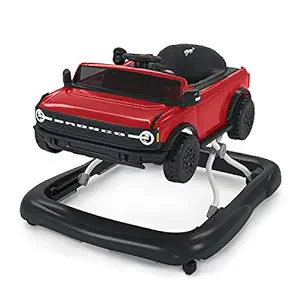
Table of Contents
Are you looking for the ideal baby walker?
Look at this comprehensive guide containing expert advice; here are insightful tips. To ensure that you make the right choice for your little one.
Choosing the right baby walker
It is understanding baby walkers:
Baby walkers are wheeled devices that help babies get around before they can walk independently. They usually consist of a set surrounded by a frame with wheels.
Safety in the first place:
Ensuring your child’s safety is most important when choosing a walker. Look for models with solid frames, broad bases, and locking mechanisms to prevent accidents.
Comfort and Support:
Choose walkers with padded seats and adjustable height settings to provide maximum comfort and support when locating your child.
The construction of a standard:
Invest in a walker made of durable materials to guarantee longevity. Check the smooth rotating wheels and non-toxic finish for peace of mind.
Essential Features to Consider

Interactive Toys and Activities:
Choose a walker that includes exciting toys and activities to entertain and encourage your child as they explore their surroundings.
The portability and storage:
To make storage and travel easier, take into account the walker’s dimensions and foldability. Families on the go and small areas will benefit greatly from the compact design.
It’s easy to clean:
Look for walkers with removable, machine-washable seat covers for hassle-free cleaning and maintenance.
How to avoid unsafe design elements
Stay clear of sharp edges, small sections, or walkers with ropes that create choking hazards for your child.
Poor conduct:
Avoid walkers that are difficult to steer or get stuck easily, as they can frustrate your child and hinder their movement.
The lack of adaptive features:
Ensure the walker’s height and seat adjustments are customizable to accommodate your child’s growth and development.
A selection of perfect-fit

Consulting reviews and recommendations:
Researching online reviews and getting recommendations from other parents can provide valuable insight into the best baby walkers on the market.
A test for peace:
Allow your child to try different walker models to gauge their comfort and enjoyment. Please pay attention to their reactions and body language.
Consider long-term use:
Choose a walker that provides versatility and longevity, allowing your child to use it at different early development stages.
Baby walkers are ingenious devices designed to aid infants in their journey towards independent mobility. These walkers typically consist of a seat surrounded by a frame with wheels, allowing babies to move around while supported by the structure. Let’s delve into a detailed description of what makes baby walkers so popular among parents:
Structure and Design:
Baby walkers come in various shapes and sizes but generally feature a sturdy frame made of plastic or metal. The frame surrounds a comfortable seat where the baby sits, often equipped with padding for added comfort. The seat is positioned in the walker’s center, providing balance and stability as the baby moves around. Additionally, most baby walkers have a tray or dashboard attached to the front, offering interactive toys and activities to engage and entertain the baby during playtime.
Wheels and Mobility:
One of the defining features of baby walkers is their mobility. The walker’s base has wheels that allow the baby to glide effortlessly across the floor. These wheels are typically made of sturdy plastic or rubber and are designed to move smoothly on various surfaces, including hardwood floors, tiles, and carpets. Some walkers even come with adjustable wheel speeds, allowing parents to control the pace of movement based on the baby’s developmental stage and surroundings.
Adjustability:
A lot of baby walkers are made to expand along with your infant. They frequently have height-adjustable settings, so parents can raise or lower the seat to meet their changing needs or those of their infant. Because of its adaptability, the walker will continue to be supportive and comfortable even as the infant grows taller and develops stronger legs.

Safety Features:
Safety is paramount for baby products, and walkers are no exception. Manufacturers incorporate various safety features to protect babies from calamities and injuries while using the walker. These may include locking mechanisms to prevent the walker from rolling down stairs, bumper guards to protect walls and furniture from collisions, and non-slip grips on the wheels to stabilize smooth surfaces.
Baby walkers offer infants a safe and enjoyable way to explore their surroundings and develop essential motor skills. With their thoughtful design and array of features, baby walkers provide parents with peace of mind while encouraging their little ones to embark on exciting adventures in the comfort of their own homes.
Conclusion
In the end, baby walkers can be valuable tools to help with the baby’s exploration and movement. They provide fun and freedom. When children learn to walk, they provide a sense of excitement and adventure. However, baby walkers must be used responsibly and under close supervision to prevent accidents and ensure the safety of the baby. Although pedestrians can offer advantages in mobility and recreation, they are not a substitute for parental communication and supervision. Parents should carefully consider safety features, developmental suitability, and guidelines for appropriate use when selecting and using a baby walker. Ultimately, by prioritizing safety and responsible use, parents can provide their children with a positive and enriching experience with BabyWalker while supporting their developmental milestones.
